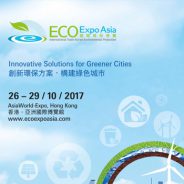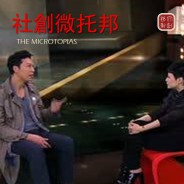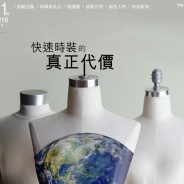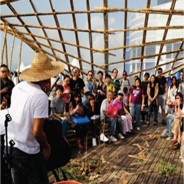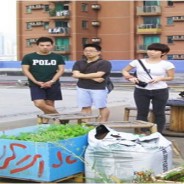knowing WHY 关于SMAD
什么是’SMAD’
‘SMAD’ [1]是 “绿活创、作、行” (Sustainable MAKE, ACT, DO) 的英文缩写。
它是一个通过汇集、传播和分享中国城镇居民日常生活中的环保行为和制作事例, 来宣扬永续消费概念和促进社会性“绿活”实践的一个开放式网络资源平台。
为什么要’SMAD’
作为香港和中国城镇的住居者, 为什么我们需要以一种不同于过往的‘绿活’方式来维护我们自身及整个世界的永续发展呢?
您或已知道…….
1) 中国(包括香港)作为一个经济体, 是现今全球最大的能源消耗地区[2]。
2) 香港及中国城镇居民的资源及能源消耗量至少比农村居民多出三倍。(Funk, 2007)
3) 现今全球至少百份之70的碳排放量主要是来自于相对富裕的城镇人口 (Munasinghe, 2010) 。例如香港的碳排放量较其他发展中
国家,如印度、越南和巴西等多出四倍。(请参考下图)
因此,我们不仅污染着自己赖以生活的环境,更危害着自身的健康以及城市经济的发展[3]。
你愿意看到烟雾迷朦的天空变成我们所居住城市的日常景象吗?
4) 我们多惯于生活在以科技手段辅建的城市环境中, 因此我们或许更相信科技可解决今后所有气候与环境的问题。但事实上创新科技的研犮与普及应用需时长久(至少20至30年) (Rau, Toker & Howard, 2010; Speth, 2009) 。单靠新科技的开犮投入,不仅不能及时应对迫在眉睫的危机[4], 而且更易造成人们对它过度的依赖而引犮消费的“弹反效应” (Tukker & Tischner, 2006), 单看看我们在1961年至2007年间以倍增长的 ‘生态足迹’ 就可作明证 (LPR, 2010)。科技只是破解现今环境问题的半个答案而已。
因此我们更需要学习减少我们的物质欲望,并通过明智的和可持续的消费方式去开展一个更‘绿色’、更健康和更愉快的未来。
为此, “绿活创、作、行” (‘SMAD’), 一个以设计为主导的网络平台因而建立。
‘SMAD’ 背后的构思是希望通过有趣多样的循环再造设计和手作实例, 来引起市民大众对‘绿活’方式的关注、讨论与分享, 进而推动‘可持续消费’模式和‘绿活’社群于社会中普及地实践和犮展。所以在网站中所展示的那些再造设计和手作并不是其最终目的, 而只是作为平台“吸引招徕”的一种手段。
通过这一切, 我们更希望邀请您的参与, 成为推动可持续消费和‘绿活’方式的‘激活因子’。
如何成为推动 ‘SMAD’ 的一份子
要成为推动“绿活”的一员, 和宣扬 “绿活”的理念, 我们有4个基本信念希望与您分享:
- Start from yourself (从个人自身做起)
实践“绿活”需要从自身做起,不应期望他人(如政府、非牟利组织、商业机构等)替代自已行动。
- Make every consumption count (注重每个消费)
重视每一个看似微不足道的“绿活”消费行为、创作或制作, 它们都是迈向永续社会转化的重要一步。例如,每人每天少用一张纸巾。若以全香港7百万人口计算, 我们每年将可挽救近8万7千棵树, 而以全中国13.4亿人口计算, 我们每年则可保存了1千7百20万棵树!这便是每个微细绿色消费结集的惊人力量。
- Act everyday in everyway (坚持每天实践)
“绿活”并不是一次过或偶尔的实践, 而是在日常每天的生活中‘言行一致’及‘身体力行’的一种持续的坚持。
- Devoted to share (致力“绿活”分享)
懂得如何“绿活”固然很好, 但学会与他人分享“绿活”的筒中快乐与经验会更棒! 成为一个具影响力的人, 去分享自己所知的和所拥有的,来共同创造属于这个城市的“绿活”变革吧!
‘SMAD’ 的邀请!
如果您已然实践“绿活”消费, 又或者正寻求自身生活模式的‘绿色’变革, “绿活创、作、行” (‘SMAD’) 这个平台的大门将完全为您开启, 并同时期待您的参与和体验的分享。
- 您是否有一些趣味性的“绿活”体验 (‘ACT’), 或可行的环保小手作/小点子(‘DO’)? 又或者得知一些不环保的生活行为(‘MISACT’),不良家用产品(‘MISMAKE’) 或浪费资源的小手作(‘MISDO’)吗?请通过这网站的 “knowing, DO YOU? ”(案例上传) 功能上传此网站上与大众一起分享吧!
- 还有, 如果您有制作过利用废料再造的, 或有利环保生活实践的自家手作(DIY),又或者知道任何有关可持续 “思辩“、“生活”、“设计”、“认知”、“创新”或“连结”的网络链接, 请点击“contact us 联系我们” 予以告知。
在此谨代表 ‘SMAD’ 团队各人诚挚地感激您对‘绿色’变革作出贡献,并为“绿活”理念的传播出一分力!
谢谢!
‘SMAD’的背后
绿活创、作、行 (‘SMAD’) 网络平台 是由香港理工大学设计学院 的 DESIS-Lab 所发起的。它是「赛马会社会创新设计院」(JCDISI) “可持续生活方式设计研究课题” (Sustainable Lifestyle Design Initiative) 框架下的设计研究项目之一 。
项目团队:
- 协调人[1] : 梁町 (Benny Ding Leong)
- 协调人[2] : 李宇轩(Brian Y.H. Lee)
- 网站设计与编程 : 王挺 (Tifa Wang Ting)
- 项目助理 : 黄锐 (Raycent Huang Rui)
支持 / 协作机构:
- 香港妇女劳工协会
- ‘绿适天地’ (Eco Home)
- 生活方式设计研究联盟(中国)
- (有待确定!)
[注释]
[1] ‘SMAD’ 在此也借用了遗传科学中的SMAD家族蛋白作为比喻,以 ‘SMAD’ 的基因转录和传输这一关键功能来代表日常的绿色行动及智慧(作为激活因素或信号)在中国城镇居民间(特别以中等收入家庭为主)的传递和影响,以激活一个迅速、广泛的, 以低碳生活和可持续发展为导向的社会变革。
* SMAD 家族蛋白在将TGF-β信号从细胞表面受体传导至细胞核的过程中起到关键性作用。 SMAD 基本上结合了Mother Against Decapentaplegic (MAD) and the Caenorhabditis Elegans (SMA) 两种蛋白, 是某些基因的转录激活因子。
[2] 根据IEA(国际能源总署)巴黎分部的研究报告显示,中国在2009年消耗了约22.5亿吨油当量的能源,比美国的消耗量还多出4%。 按此计算,到了2015年,中国能源消耗量将会达到世界能源消耗总量的1/4(大约23.9%)(Swartz & Oster, 2010; as cited in Hu & Yan, 2010)。
[3] 在香港受污染的空气每年平均夺去1,600条生命,并造成约20.3亿港元的经济损失(The Standard, 2006)。 而当中国已成为世界最大的二氧化碳(CO2)和二氧化硫(SO2)排放国的今天,中国的空气悬浮颗粒指数已经是世界卫生组织发布的“基本安全”标准最高水平的2倍以上, 每年都约有40万人因空气污染而死亡。而在经济方面,单是2007一年空气污染就造成了8% 至15% 的国民生产总值 (GDP) 的损失 (Hu & Yan, 2010; Economist, 2007; Economy & Lieberthal, 2007)。
[4] 大气中的二氧化碳水平预计将会持续快速地增长,并在2050年超过百万分之550。而由此将导致全球温度平均上升3-4摄氏度,引发荒漠化问题并将造成海平面上升以致使众多城市、地区乃至国家被淹没。要阻止这一严重后果,世界需要在2015年前控制碳年度排放增长量于2%之内,然后每年以3%至5%的年减排量递减到2050年(Adam, 2008; Stern, 2007)。然而,由于每1%的世界生产总值(GDP)的增长就会产生大约0.9%的碳排放 (Bowen et al. 2009), 按照中国、印度和印尼等犮展中大国在未来数年间的增长预测, 全球经济将被强力地引动达3.5%的增长 (World Bank, 2011)。 因此,单单依靠技术变革将不可能帮助我们于2015年前达到2%碳年度减排量的目标。
***********************************************************************************************************************************
WHAT is ‘SMAD’ ?
SMAD[1] is an acronym of “Sustainable MAKE, ACT, DO” —an open source, online platform which aims to promote and stimulate social wide change towards green consumption and lifestyle via the amassment, dissemination and sharing of sustainable wits or flaws of daily acting, doing and making among urban dwellers in Hong Kong and mainland China.
WHY ‘SMAD’ ?
Why we, the urban dwellers in Hong Kong and China need to “MAKE”, “DO” or “ACT” differently for sustaining our own development and the world’s future?
1) China (including Hong Kong) as a whole is now the world’s biggest energy consumer [2].
2) Urban dwellers in Hong Kong and China are consuming at least 3 times more energy and resources than the rural folks of our own country (Funk, 2007).
3) Urban dweller (supposedly also the richer) are responsible for at least 70% of the Co2 emissions of the world today (Munasinghe, 2010). For example the per capita Co2 emissions of Hong Kong is 4 times more than developing countries like, India, Vietnam and Brazil. Hence, not only are we polluting the environment that we are living in, but also harming our health and economy [3] .
4) Urban dwellers are living in a technologically enhanced environment. We might believe in green technology for resolving our pressing developmental and environmental dilemma, but all technological innovations do require 2 to 3 decades to attain wide use (Rau, Toker & Howard, 2010; Speth, 2009). Not only will it be not deployable in time to meet our crisis [4], but also will it develop dependency among us and engender ‘rebound effect’ of consumption at the same time (Tukker & Tischner, 2006). Just see how our demand on the biosphere has just doubled between 1961 and 2007 (LPR, 2010). Technology is only half of the answer!
Therefore, we need to reduce our materialistic desires and learn to lead a greener, and perhaps happier life via consume differently, sensibly and sustainably.
For that, the ‘Sustainable MAKE, ACT, DO’ (SMAD) site, a DESIGN led platform has been specifically created.
The collected cases of ‘upcycling’ design (‘MAKE’) within the ‘SMAD’ platform are not the END but ‘point-of-attraction’ (the MEANS) by themselves. Through this, we would like to stimulate a social wide sharing of daily practices of sustainable/ unsustainable ‘DO’ and ‘ACT’, and eventually the spread of sustainable way of living in Hong Kong and various cities in China. Hence you are most welcomed to take part in the ‘SMAD’ movement and become as a ‘SMAD’ activist.
HOW to become a ‘SMAD’ Activist?
For the promotion of ‘SMAD’, we have 4 basic beliefs to be shared:
- Start from Yourself –
Sustainable way of living has to start from ONESELF (particularly you, yourself). One’s nagative or positive behaviour can influence those who beside or close to you. Such influences ranging from 6% to 61%, depend on the degree of seperation of the relationship. (Nicholas & Christakis, 2009).
- Make every consumption count –
Every sustainable MAKE, ACT or DO counts. For instance, use ONE tissue paper less per day may sound insignificant. But collectively it will help to save nearly 87 thousand trees yearly for Hong Kong (7 million people be counted in HK) and 17.2 million of trees per year for China (if 1.34 billion people be counted in China).
- Act everyday in everyway –
Sustainable consumption should not be an one-off or occasional practice. It’s about how to “WALK THE TALK” and persisting acts in everyday life.
- Devote to share –
Knowing how to lead a life sustainably is great. But learn to SHARE the joy and experience of sustainable living with other would be even greater. Be an ‘influencer’ to make a sustainable change by sharing what you know and what you have!
SMAD’s invitation!
If you have been practicing sustainable consumption, or seeking change towards sustainable way of living, the “SMAD” platform is OPEN totally for you, and looking for your contributions at the same time.
- Do you have enjoyable experiences or workable ideas of sustainable “ACT” and “DO”? Or interesting cases of “MISACT”, “MISMAKE” or “MISDO”? Please share with us by uploading them within the subsections of knowing, DO YOU? 案例上传 of this site.
- Have you made any “green” DIY product? Or knowing any web links which could enrich our “thinking”, “living”, “learning”, “designing”, “innovating” or ‘networking’ for sustainability? Please inform us via the contact us 联系我们of this site.
Your contributions would be very much appreciated.
THANK YOU!
Behind the “SMAD”
The ‘SMAD’ online platform is initiated by the DESIS-Lab of the School of Design, Hong Kong Polytechnic University. It is one of the design and design research programs under the framework of the Jockey Club Design Institute of Social Innovation (JCDISI) of the School.
Project Team
- coordinator [1]: Benny Ding Leong
- coordinator [2]: Brian Y.H. Lee
- site design & programming: Tifa Wang Ting
- project assistant: Raycent Huang Rui
Supporting or Collaborative Organizations
- Hong Kong Women Workers Association (HKWWA)
- ‘Eco Home’
- Lifestyle Design Research Network of China (LSDER-China) t.b.c.
- (to be announced….)
NOTE:
[1] ‘SMAD’ here also refer to the ‘SMAD’ proteins in genetics science as an analogy, which metaphorically represent SMAD’s key function of transcription and transmission of daily acts and wits of green (as activating factors /signals) among urban influencers (mainly middle-income families) in HK and China for activating a rapid, social-wide transformation towards low-carbon lifestyle and ultimate sustainability.
[2] According to the Paris based IEA (International Energy Agency), China has consumed about 2.25 billion tons of oil equivalent in 2009, about 4% more than the US . But by the year 2015, China energy consumption will be nearly a quarter (around 23.9%) of the world’s total (Swartz & Oster, 2010; as cited in Hu & Yan, 2010).
[3] Contaminated air has exterminates 1,600 lives and cost about HK$20.3 billion a year for Hong Kong (The Standard, 2006). As China become the world largest emitter of Co2 and So2 (sulfur dioxide), China’s air carries suspended-particulate-matter loads that are more than twice the highest level of ‘reasonably safe’ standard of the World Health Organization. 400,000 people die yearly as a result of air pollution. Economically, it had cost 8 to 15 percent of China’s GDP in 2007 alone (Hu & Yan, 2010; Economist, 2007; Economy & Lieberthal, 2007).
[4] Carbon dioxide level in the atmosphere is expected to rapidly rise above 550ppm (parts per million) by 2050. While the world will get 3 to 4 oC warmer, it will inflict growing desertification and also drowning of cities and nations. To avoid these deleterious consequences, the world need to cap the yearly growth of carbon emission within 2% by 2015, and then decrease 3 to 5% yearly until 2050 (Adam, 2008; Stern, 2007). However, as 1% growth of world’s GDP would engender approximately 0.9% of carbon emission (Bowen et al. 2009). The foreseeable growth of China, India and Indonesia would lead a robust growth of global economy at around 3.5% in the coming years (World Bank, 2011). Hence depending on technology alone will NOT be possible for us to meet the targeted 2% emission by 2015.
Reference:
Adam, D.(2008, October 27). Australia’s Stern review warns of runaway global warming, Guardian UK. Retrieved August 25, 2011, from http://www.guardian.co.uk/environment/2008/oct/27/climate-change-australia
Bowen, A., Forster, P.M., Gouldson, A., Hubacek, K., Martin, R., O’Neill, D.W., Rap, A., and Rydge, J. (2009). The Implications of the Economic Slowdown for Greenhouse Gas Emissions and Targets. Centre for Climate Change Economics and Policy (CCCEP), Policy paper, October
Economist (2007, June 2) Cleaning up: A special report on business and climate change. The Economist : 3-26
Economy, E and K., Lieberthal (2007) ‘Scorched Earth: Will Environmental Risks in China Overwhelm Its Opportunities?’. Harvard Business Review. June 2007: 88-96.
Funk, McKenzie. (2007) China’s Green Revolution, Popular Science, 271(2), 78-114
Hu, A.G. and Yan Y.L. (2010). Green money influx of red China: the big flip of the 12th five years plan (in Chinese). Taipei: Tianxia magazine holding Co. Ltd.
胡鞍钢 , 鄢一龙(2010)。《 红色中国 绿色钱潮:十二五规划的大翻转》。台北:天下杂志股份有限公司 。
LPR (2010). Living Planet Report. Retrived August 18, 2011 from http://www.footprintnetwork.org/press/LPR2010.pdf
Munasinghe, M. (2010). Can Sustainable Consumers and Producers Save the Planet? Journal of Industrial Ecology. 14(1), 4-6
The Standard (2006, December 4). Lot of hot air on pollution, claims Tien. Retrived August 18, 2011 from http://www.thestandard.com.hk/news_detail.asp?pp_cat=11&art_id=33289&sid=11176569&con_type=1&d_str=20061204&sear_year=2006
Rau, A., Toker, R., Howard, J.,(2010). Can Technology Really Save Us from Climate Change? Harvard Business Review, 88(1), 21-23.
Speth, J.G. (2009). Doing Business in a Postgrowth Society. Harvard Business Review, 87(9), 18-19.
Stern, N. (2007). The economics of climate change: The Stern Review. New York: Cambridge University Press
Swartz, S. and Oster, S. (2010, July 18). China Tops U.S. in Energy Use : Asian Giant Emerges as No. 1 Consumer of Power, Reshaping Oil Markets, Diplomacy. The Wall Street Journal. Retrieved August 20, 2011 from
Tukker, A. and Tischner, U. (2006) New Business for Old Europe: Product-service Development, Competitiveness and Sustainability. Sheffield, UK: Greenleaf Publishing.
World Bank (2011). Growth will slow but remain robust. Retrieved August 20, 2011 from
http://web.worldbank.org/WBSITE/EXTERNAL/EXTDEC/EXTDECPROSPECTS/EXTGBLPROSPECTSAPRIL/0,,
contentMDK:22932830~menuPK:659178~pagePK:2470434~piPK:4977459~theSitePK:659149,00.html







